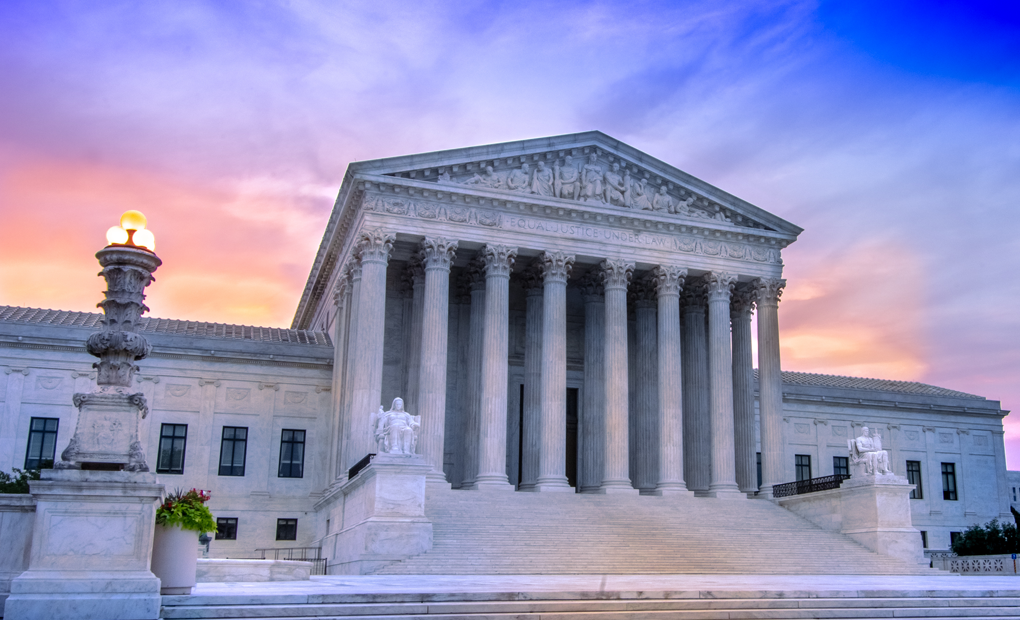Ph: 404.844.4130
Fax: 404.844.4135
3212 Northlake Pkwy #450906
Atlanta, GA 31145

In a move that will have a major impact on workplace regulations for years to come, the U.S. Supreme Court just upended the legal world by overturning the decades-old Chevron doctrine, which required courts to defer to federal agencies’ interpretations of ambiguous statutes. The Chevron deference rule, established by the Supreme Court in Chevron U.S.A., Inc. v. Natural Resources Defense Council, Inc. (1984), mandated that courts defer to an agency’s reasonable interpretation of ambiguous statutes if Congress had not spoken clearly or precisely. The Supreme court’s decision in Loper Bright Enterprises v. Raimondo, Secretary of Commerce, on June 28 determined that courts may not defer to an agency’s interpretation of the law just because it is ambiguous, but instead “must exercise their independent judgment when deciding whether an agency has acted within its statutory authority.”
The Court wrote that Chevron is at odds with the requirements of the Administrative Procedure Act, because it allows agencies to change positions as they please without being authorized by Congress to do so. The Court also wrote that Chevron “prevents judges from judging.” This decision significantly reduces the power of federal agencies and places more authority in the federal hands of judges. By tossing out the standard that gave deference to federal agencies in favor of judicial interpretation, the Supreme Court hands employers a powerful tool to strike down agency rules much more easily if there is regulatory overreach, but at the cost of uncertainty of how any regulation, including those of the workplace, will be interpreted by an individual judge or court.
Much of the legislation that molds the day-to-day operation of the workplace has been shaped by federal agencies that have benefitted from courts’ deference to agencies under the Chevron doctrine. The Supreme Court’s decision to overturn Chevron deference doesn’t invalidate past cases that relied on the Chevron framework. Those precedents remain intact, meaning any regulations or decisions made under Chevron are still legally binding unless specifically challenged and overturned on other grounds. In fact, the Supreme Court specifically stated that those cases remain valid legal precedent despite the Court’s change in interpretive methodology. But it does open the door for new challenges to agency actions.
While the Court’s decision doesn’t erase past reliance on Chevron deference, it sets a new tone for how courts will approach agency interpretations in the future. This shift may lead to more nuanced regulatory frameworks and increased accountability for agencies, potentially impacting workplace regulations and compliance strategies over time. A real concern is that the new rule will throw everything into a state of uncertainty or even chaos. While employers could historically rely on rules and regulations established by federal agencies such as the DOL and EEOC, now judges in different jurisdictions will almost certainly hand down different rulings on the same issue in different states, leading to a patchwork of compliance obligations and adding to the headaches of multistate employers.
Here are some agency rules and positions that may come under attack in the coming months and years:
Non-Compete Agreements: Recently, the Federal Trade Commission (FTC) issued a new rule that will effectively ban most non-competition agreements as of September 4. Without Chevron deference, courts may be less deferential to the FTC’s interpretation of its authority to regulate non-compete agreements. This could lead to more challenges and scrutiny of the FTC’s rules by courts, potentially affecting the enforceability or scope of those rules.
Wage and Hour: The Department of Labor recently raised the floor earnings an employee must receive in order to be considered an exempt employee under the Fair Labor Standards Act. The DOL’s rules regarding overtime exemptions could face increased judicial scrutiny without Chevron deference. Courts may independently assess whether the DOL exceeded its authority or correctly interpreted the relevant statutes when issuing these rules. Recent tip pooling and tip credit rules by the DOL and a rule making it far harder to classify workers as independent contractors may also come under scrutiny.
Discrimination/Harassment: The Equal Employment Opportunity Commission (EEOC) has issued a number of regulations that shape not only employers’ compliance measures but also workplace litigation. The Age Discrimination in Employment Act (ADEA) and Americans with Disabilities Act (ADA) are often cited as prime examples of statutes with overbroad rules.
Workplace Safety: The Occupational Safety and Health Administration (OSHA) recently issued a broad electronic recordkeeping rule and the Mine Safety and Health Administration (MSHA) recently published its final rule on respirable crystalline silica.
Pay Equity: The EEOC has signaled an interest in returning to the pay data reporting requirement from a few years ago that required employers to turn over compensation information in an attempt to tackle pay equity issues.
Labor Law: The National Labor Relations Board (NLRB) has reshaped labor law in the last few years with a series of actions ranging from protecting concerted activity to revising its “joint employer” rule to make it easier for workers to be considered employees of more than one entity.
Immigration: Much of the nation’s immigration policy is carried out through regulation, especially those impacting the workplace. The Department of Homeland Security is heavily involved in creating regulations and adjudicating employment-based immigration applications, for example. The demise of Chevron deference may make it easier to challenge the agency’s restrictive regulations or denials of immigration applications.
The most important steps that employers can take at this time are to stay informed about any update on regulatory changes and judicial interpretations affecting their industry and to consult with legal counsel as you navigate potential regulatory changes and compliance issues.
Feel free to contact us with specific questions. You can learn more about our products and services on this website or contact one of our attorneys, Jay Rollins or Debra Schwartz by calling 404.844.4130.
